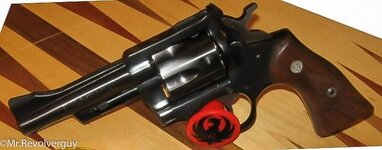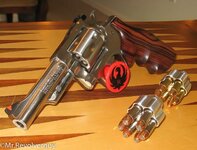- Messages
- 317
- Reactions
- 413
I figured that I might help you understand my obsession.
By Mark Singer
Safe Direction Firearms
Web Address: safedirection.org
In this author's humble opinion it is the best revolver ever offered by Ruger. As compared to a Smith and Wesson I'd say there is a tiny bit of travel in single action with nearly zero pressure behind it and while the single action may not be as crisp as a S&W; I like how smooth the double action trigger is compared to the Smith. I even think the Security, Speed, and Service six revolvers' DA triggers are better than other Ruger models, such as the GP100 and SP101. Also, Ruger revolvers tend to be low maintenance and are very easy for a novice to completely disassembly.
.357 Magnum Ruger Security Six Early 150 Prefix Model


http://www.dayattherange.com is a self funded (no advertisements ) website dedicated to provide unbiased reviews. It is the owner and the author's way of giving back and sharing a great sport and part of America's tradition. Stop by and let us know what you think about this article, by leaving comments.
By Mark Singer
Safe Direction Firearms
Web Address: safedirection.org
In this author's humble opinion it is the best revolver ever offered by Ruger. As compared to a Smith and Wesson I'd say there is a tiny bit of travel in single action with nearly zero pressure behind it and while the single action may not be as crisp as a S&W; I like how smooth the double action trigger is compared to the Smith. I even think the Security, Speed, and Service six revolvers' DA triggers are better than other Ruger models, such as the GP100 and SP101. Also, Ruger revolvers tend to be low maintenance and are very easy for a novice to completely disassembly.
.357 Magnum Ruger Security Six Early 150 Prefix Model


http://www.dayattherange.com is a self funded (no advertisements ) website dedicated to provide unbiased reviews. It is the owner and the author's way of giving back and sharing a great sport and part of America's tradition. Stop by and let us know what you think about this article, by leaving comments.












